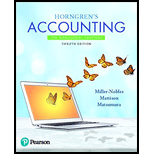
Trend Analysis: Trend analysis is an extended feature of horizontal analysis that enables the user to get the trend for a particular account during a relatively longer time period like five year. It makes the base year’s amount as 100 and then calculates the percentage for the amount of following years.
Profit Margin Ratio: Profit margin ratio reflects the portion of net income in the net sales. It is a profitability measure tool that is used to evaluate the net income a business earns on every dollar of net sales. It is computed as net income divided by net revenue.
Inventory Turnover: It is a part of efficiency ratios used during the process of ratio analysis. It reflects the number of times a company’s inventory is converted into sale during a particular period. The cost of goods sold is divided by average inventory to get the value of inventory turnover.
Days’ Sales in Inventory: This is also a key ratio and determines the number of days a company needs to completely turn its inventory into sale. Inventory turnover ratio works as input to calculate days’ sales in inventory.
Debt Ratio: It is the ratio between total assets of the company and the total liabilities. Debt ratio reflects the finance strategy of the company. It is used to evaluate company’s ability to pay its debts. Higher debt ratio implies the higher financial risk.
Debt to Equity Ratio: This ratio reflects the relationship of company’s total liabilities to total equity. It is used to measure financial leverage. Higher debt to equity ratio means that the company has financed its assets by debts more than the owner’s capital.
Rate of Return on Common
1.
To prepare: Trend analysis for revenue and net income of Company A during 2014-18.
2.
To analyze: The profitability of Company A during 2014-18.
3.
To evaluate: Company A’s ability to sell merchandise inventory during 2014-18.
4.
To evaluate: The ability to pay debts of company A during 2014-18.
5.
To evaluate: The dividend per share of Company A during 2014-18.
6.
To analyze: The common stock of Company A for the investment purposes.
Want to see the full answer?
Check out a sample textbook solution
Chapter 17 Solutions
Horngren's Accounting (12th Edition)

 AccountingAccountingISBN:9781337272094Author:WARREN, Carl S., Reeve, James M., Duchac, Jonathan E.Publisher:Cengage Learning,
AccountingAccountingISBN:9781337272094Author:WARREN, Carl S., Reeve, James M., Duchac, Jonathan E.Publisher:Cengage Learning, Accounting Information SystemsAccountingISBN:9781337619202Author:Hall, James A.Publisher:Cengage Learning,
Accounting Information SystemsAccountingISBN:9781337619202Author:Hall, James A.Publisher:Cengage Learning, Horngren's Cost Accounting: A Managerial Emphasis...AccountingISBN:9780134475585Author:Srikant M. Datar, Madhav V. RajanPublisher:PEARSON
Horngren's Cost Accounting: A Managerial Emphasis...AccountingISBN:9780134475585Author:Srikant M. Datar, Madhav V. RajanPublisher:PEARSON Intermediate AccountingAccountingISBN:9781259722660Author:J. David Spiceland, Mark W. Nelson, Wayne M ThomasPublisher:McGraw-Hill Education
Intermediate AccountingAccountingISBN:9781259722660Author:J. David Spiceland, Mark W. Nelson, Wayne M ThomasPublisher:McGraw-Hill Education Financial and Managerial AccountingAccountingISBN:9781259726705Author:John J Wild, Ken W. Shaw, Barbara Chiappetta Fundamental Accounting PrinciplesPublisher:McGraw-Hill Education
Financial and Managerial AccountingAccountingISBN:9781259726705Author:John J Wild, Ken W. Shaw, Barbara Chiappetta Fundamental Accounting PrinciplesPublisher:McGraw-Hill Education





